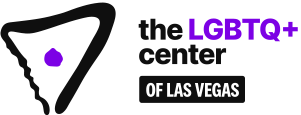Most people would agree that no two people are exactly alike. Our world is made up of a rich and varied patchwork of individuals who hold unique values, viewpoints, and self-identities. This uniqueness extends to the ways we express our genders and sexual identities, and to the way we present ourselves to one another. That’s where pronouns come in.
Gender identity, as The Trevor Project explains, isn’t an easily understandable concept. In fact, The Trevor Project reports, we sometimes need to unlearn some of our old ideas so that we can develop a truer understanding about gender. As we were growing up, most of us were taught there are really only two genders: boys/men and girls/women and only two sexes: male and female. In fact, these concepts are just the beginning.
“Gender is actually a social construct,” writes The Trevor Project, “an idea created by people to help categorize and explain the world around them.” We may not always notice it, but genders come with societal expectations — how we’re expected to act, dress, express emotion, interact with other people…
Chances are, if you were asked to picture, say, an American high school girl, the image in your mind would include several ingrained social constructs. Maybe you imagine a cheerleader or a girl with long, flowing hair and overtly feminine-styled clothing. If you did, it’s not surprising. American culture has been intensely focused on clearly defined gender roles for centuries.
Unfortunately, these deeply ingrained gender stereotypes can be extremely harmful to people who don’t happen to fit within these social constructs. It may not seem like a big deal to be misgendered (referred to by a gender other than the one we identify with), but in fact, pronouns matter.
This guide will help you learn more about the different ways people express themselves (and why) and explain the difference between concepts like sexual orientation and gender identity. We think it’s a fantastic place to start your journey to learning more about yourself and the amazing, uniquely special people all around you.
What are pronouns, and why are they important?
Pronouns are simply words used in place of nouns — in this case, we’re talking about pronouns used to refer to people in place of names. Pronouns apply to every person. Instead of “Ted,” we might say “he” or “him.” However, it’s important to be sure Ted identifies as a “he” or “him” before using male gendered pronouns. Ted might prefer “they/them,” “she/her” or another pronoun altogether.
Most of us have been using the same pronouns since birth, and we didn’t have a choice in the matter. Countless times every day, our pronouns are used by family members, coworkers, and various members of the community. If those pronouns happen to match with how we identify in terms of gender, it’s smooth sailing. But imagine if everyone around you were to use the wrong pronouns, all of the time; imagine if they always had.
Feeling like a “he” but being referred to as a “she” day in and day out would be — and for many people, IS — exhausting and often, quite painful.
Using someone’s chosen name and preferred pronouns is an easy, vitally important way to show mutual human respect and identity affirmation. That’s why so many modern organizations (even outside the LGBTQIA+ spectrum) are beginning to routinely inquire about preferred pronouns. It’s always better to ask than it is to assume, and the more commonplace this practice becomes, the more comfortable it will feel for everyone.
As the discussion around pronoun preference has evolved, an increasing number of people are choosing to use unique words as pronouns, including gender-inclusive pronouns used by people who identify as gender-fluid, gender-neutral, or non-binary. The LGBT Life Center identifies three sets of commonly used gender-inclusive pronouns:
- they, them, their, themself
- sie, hir, hir, hirs, hirself
- zie, zir, zir, zirs, zirself
Note: Some people prefer to not use pronouns at all, instead choosing to simply use their name. Others opt to vary their pronoun preferences, switching between pronouns at different points.
It may seem simple enough, but the reality is that it takes effort to be intentional about how we use pronouns — the goal should always be to foster environments and interactions that are inclusive and comfortable for everyone.
The Center Glossary of Gender Identity Terms
Don’t worry, there won’t be a test, but it’s a worthwhile goal to become familiar with the medical and scientific terminology used to explain various elements of gender and sexuality. Researchers have been studying these areas for decades, and we now have a vast body of knowledge about personal identity to draw from. We’ve come a long way since the only recognized possibilities were boy or girl, man or woman.
Our list is crafted from a variety of online resources, particularly the comprehensive, insightful glossary created by NPR.
Sex
A person’s biological status. Sex is typically assigned at birth based on external anatomy. Sex generally refers to the categories of male, female, and intersex.
Gender
Gender is not the same as sex. Gender is often referred to a “social construct” related to the norms, behaviors and constantly evolving roles of people categorized as male, female, or nonbinary.
Gender Identity
Each of us has an internal self-identity related to gender, whether we identify most as men, women, neither, or both. Our gender identities are not outwardly visible, unless our gender expressions. While most people have a gender identity that aligns with the sex assigned to them at birth, according to the American Psychological Association (APA), transgender people have gender identities that vary from their assigned birth sex.
Gender Expression
How someone presents their gender externally through their behaviors, clothing choices, vocal qualities and other characteristics. While society might consider these expressions to be masculine or feminine, cultural ideas about gender constructs change over time and vary by culture, even within the same geographical area.
Cisgender
Also called “cis,” cisgender describes someone whose gender identity aligns with their birth-assigned sex.
Transgender
Also called “trans,” transgender describes someone whose gender identity differs from their birth-assigned sex. For example, transgender women were considered male at birth, but actually identify as female.
Nonbinary
A term used by people who describe themselves outside the binary genders (male and female). “Genderqueer” is a similar term.
Agender
Describes someone who does not identify as ANY gender.
Gender-expansive
Describes someone who holds a flexible gender identity.
Gender Transition
The process by which a person takes steps to bring themselves and/or their bodies into alignment with their gender identity. NPR describes several ways transitioning can happen, including any, none, or all of the following: telling one’s friends, family and co-workers; changing one’s name and pronouns; updating legal documents; medical interventions such as hormone therapy; or surgical intervention, often called gender confirmation surgery.
Gender Dysphoria
The medically- and scientifically-recognized psychological issues that arise when there is a disconnect between birth-assigned sex and gender identity. Not every trans person will experience gender dysphoria, but at the other end of the spectrum, the experience can feel quite traumatic.
Sexual Orientation
The physical, romantic, and/or emotional attraction to members of the same and/or other genders. Terms used to describe sexual orientation include straight, gay, lesbian, bisexual, and many others. It’s important to remember that people do not need to have experienced any sexual relationships at all, or to be in a relationship, to understand their own sexual orientation. One example is a bisexual person who gets married — this person may still identify as bisexual even though they have chosen to marry someone of the same or opposite gender.
Note: Sexual orientation is not the same as gender identity. As GLAAD writes, “Transgender people may be straight, lesbian, gay, bisexual or queer. For example, a person who transitions from male to female and is attracted solely to men would typically identify as a straight woman. A person who transitions from female to male and is attracted solely to men would typically identify as a gay man.”
Pronoun Etiquette
The Human Rights Campaign (HRC) offers several excellent tips for getting it right. One of the most important, the organization says, is to create opportunities for people to share their pronouns with you — again, it’s always best not to assume someone’s pronouns based on their outward appearance. HRC recommends:
- Introduce yourself first, with pronouns: “Hi, I’m Sam, and I go by she/her.” or “Hello, everyone. I’m Jon, and I go by he/him.”
- Including your pronouns in your email signature: -Pat Reynolds (they/them/theirs)
- Always using someone’s chosen pronouns, unless you’ve specifically been asked not to (for example, when there might be a safety or privacy concern)
- Practice! It can take time to shift the pronouns you use for someone you’ve known for a long time, but it’s worth the effort.
- If you do make a mistake, acknowledge it, apologize, and move on. Don’t hesitate to gently correct others when they misgender someone.
As you can see, using pronouns compassionately is an important goal we can all work toward. Still, gender identity is a complex, evolving subject. If you are still seeking answers about gender pronouns or any other topic related to the LGBTQIA+ community, we are here to help! The Center offers a host of resources to guide you along your journey:
- Our Youth & Family Services program, QVolution, is designed to meet the social, recreational, and developmental needs of LGBTQIA+ and ally youth ages 11 to 17 and those who care for them.
- Affirmations LGBTQ+ Affirmative Counseling provides comprehensive mental health therapy and substance use treatment from an affirming, supportive perspective of LGBTQ+ identified people, their families, and loved ones.
- We offer several resources related to transgender and intersex issues. Come by for a chat in one of our groups, get help with practical issues like name and gender marker changes, visit our Switch+ closet, and more. Check out our Identi-T programming here.

